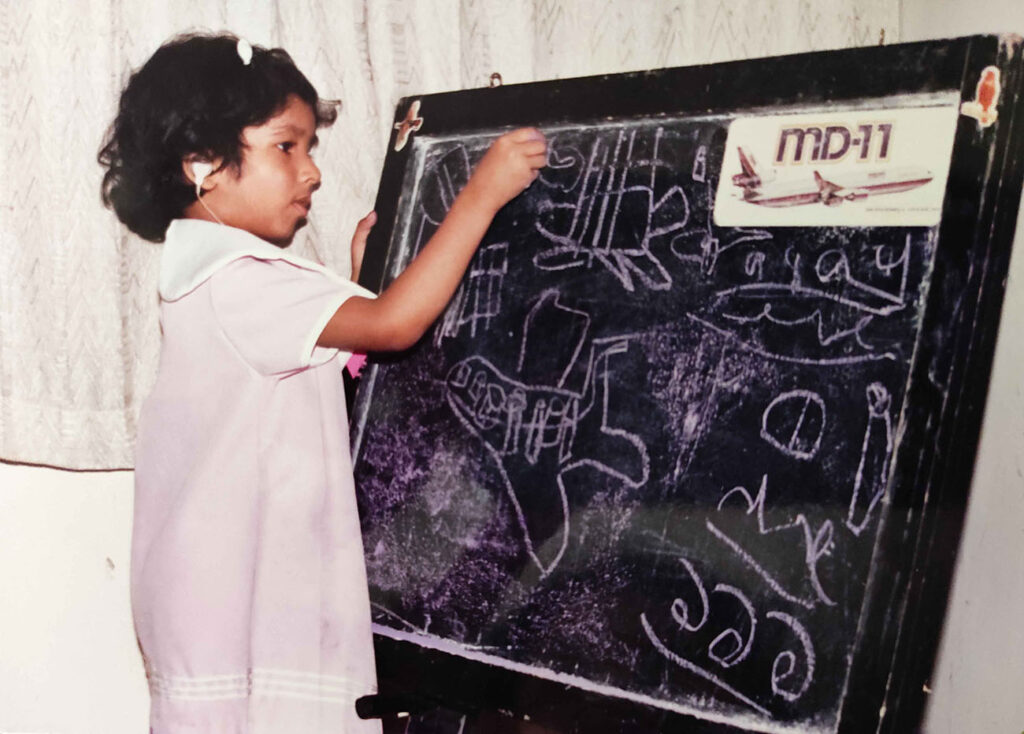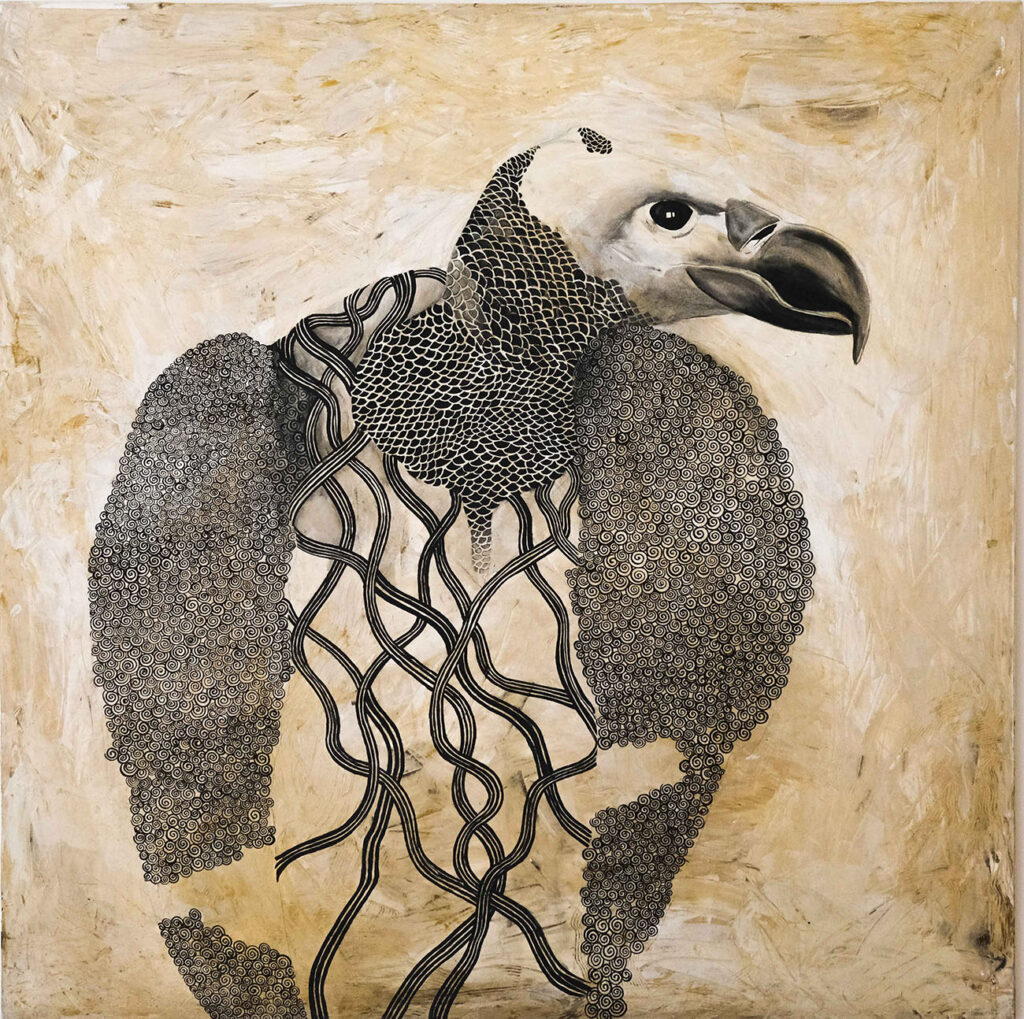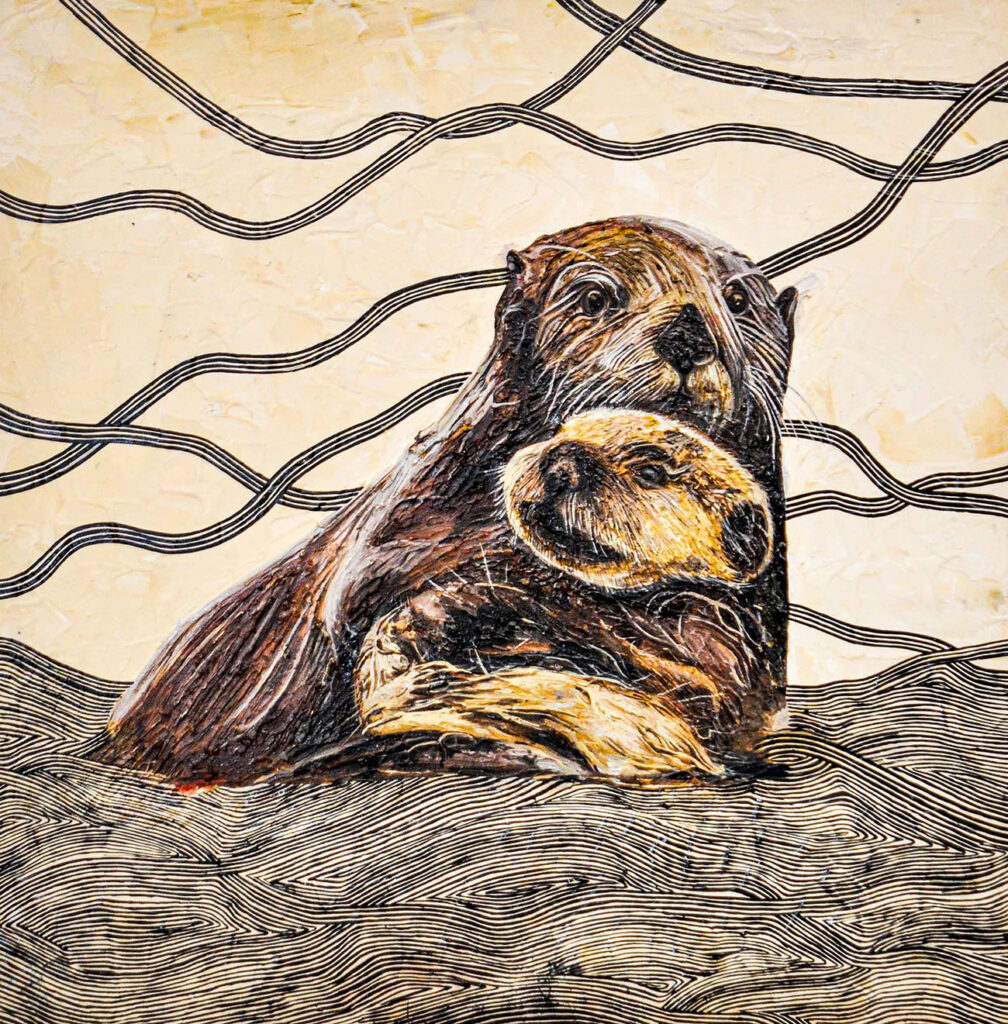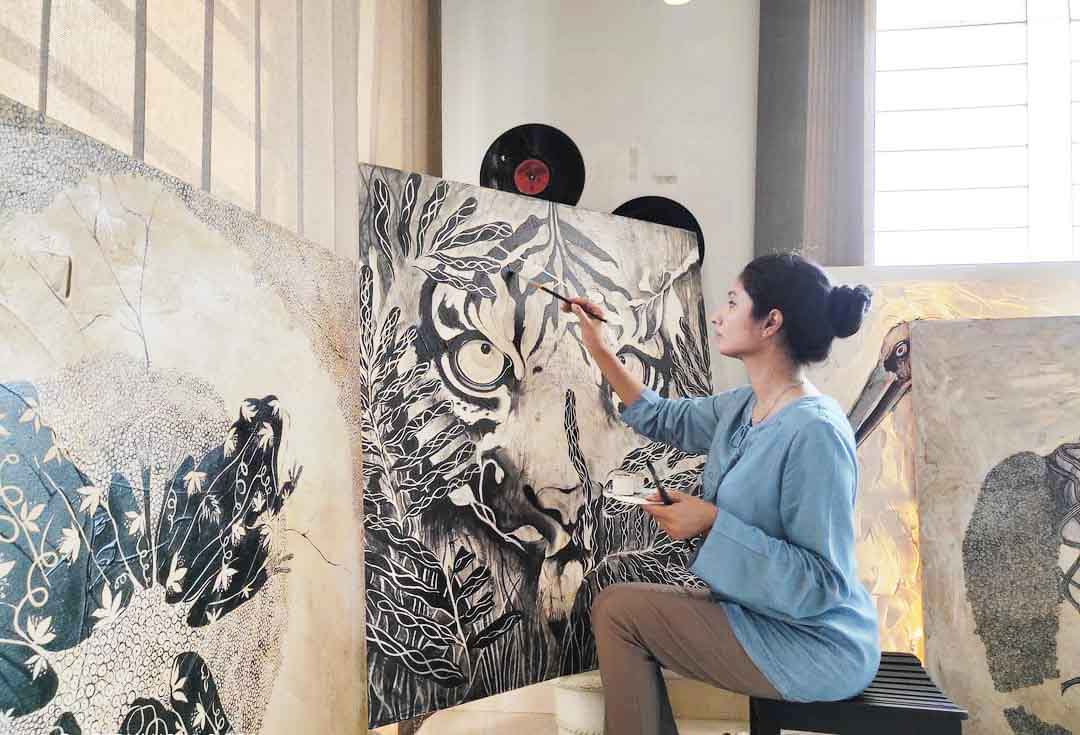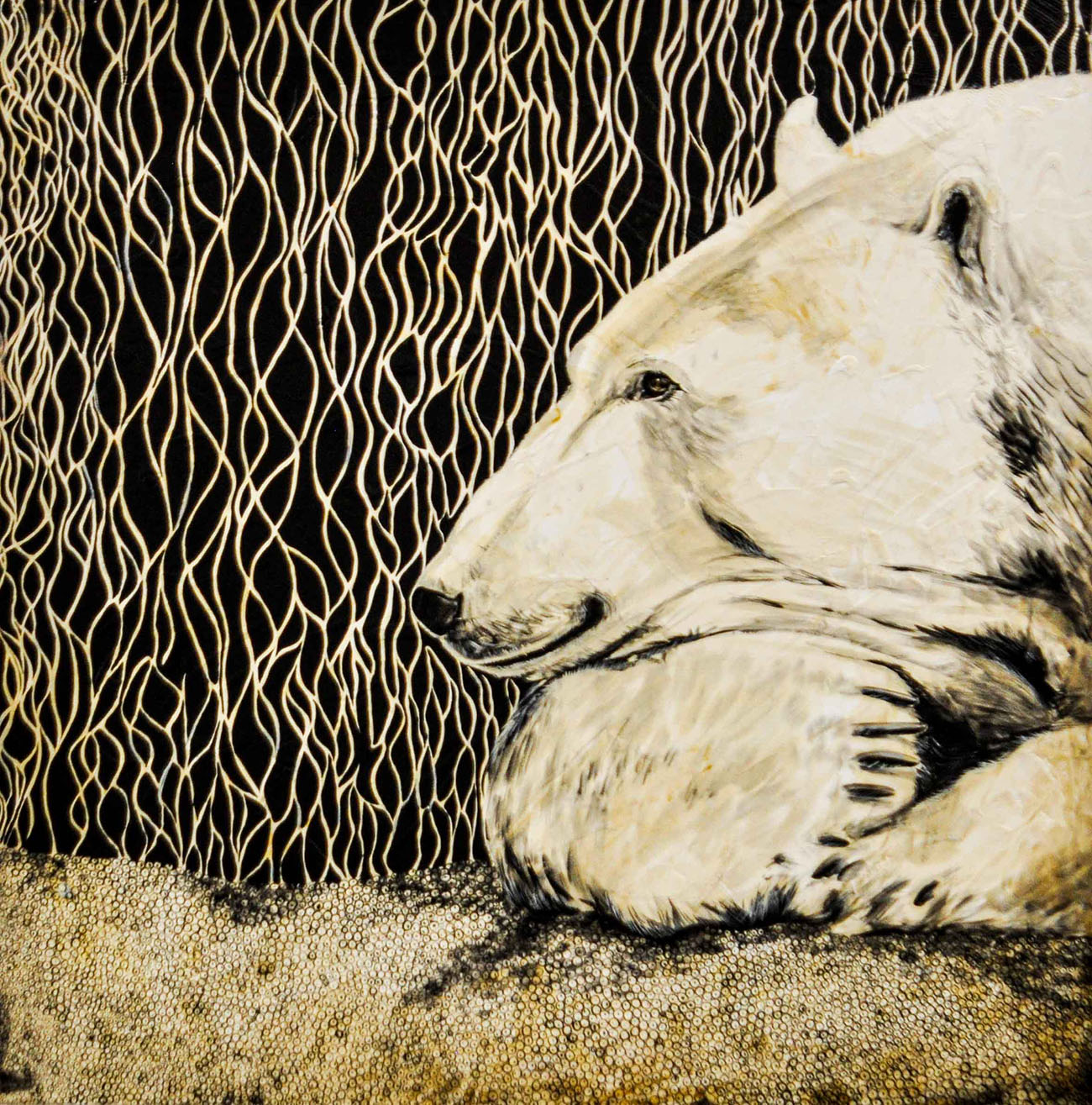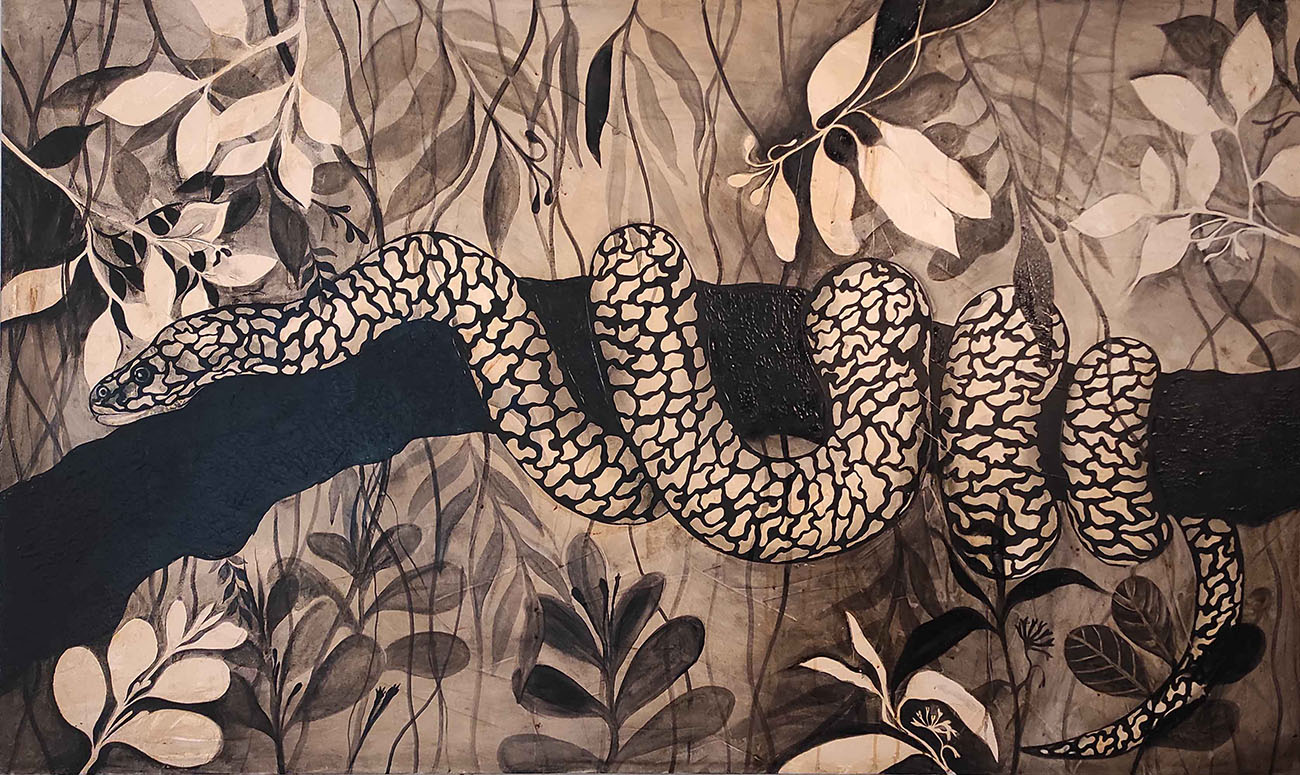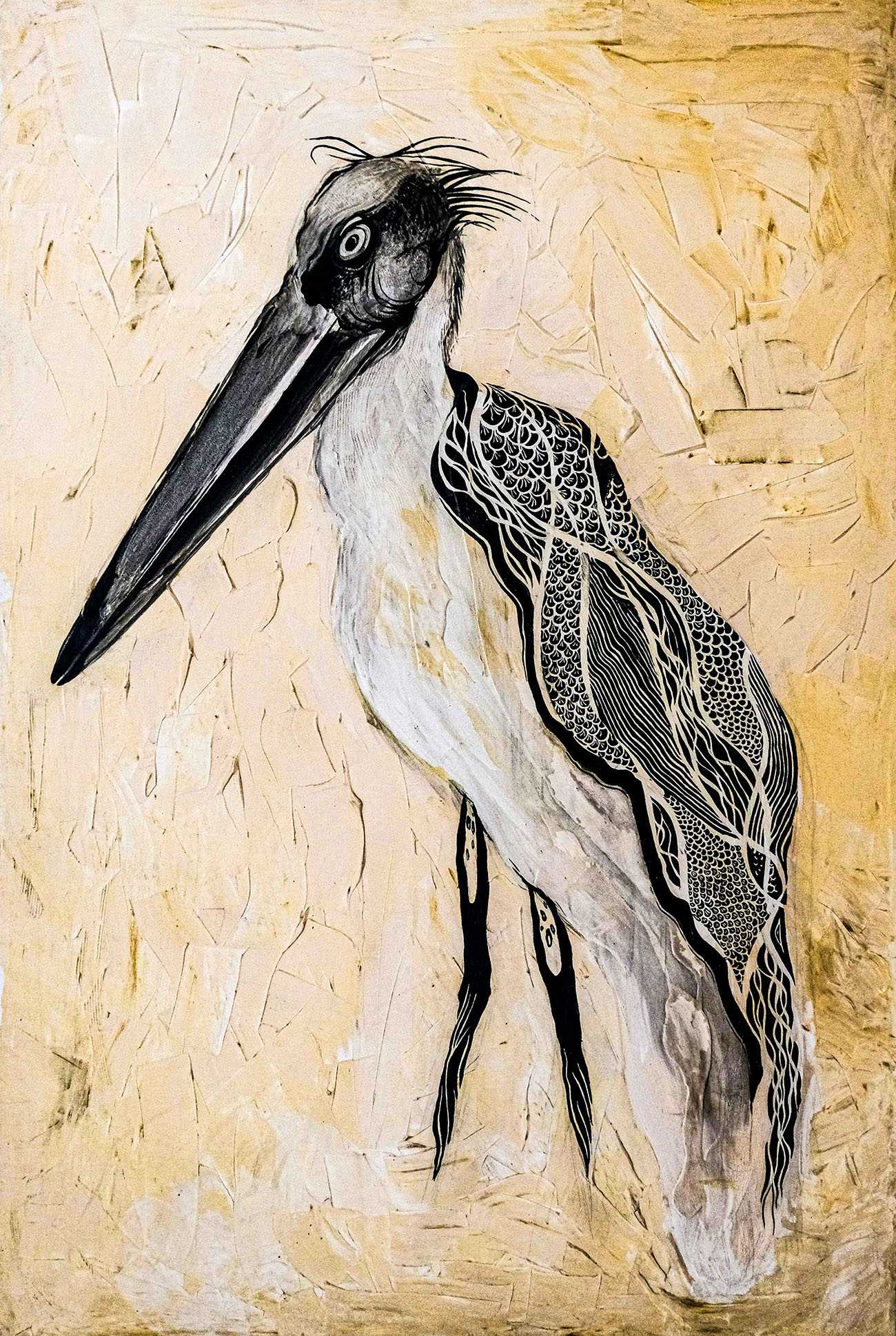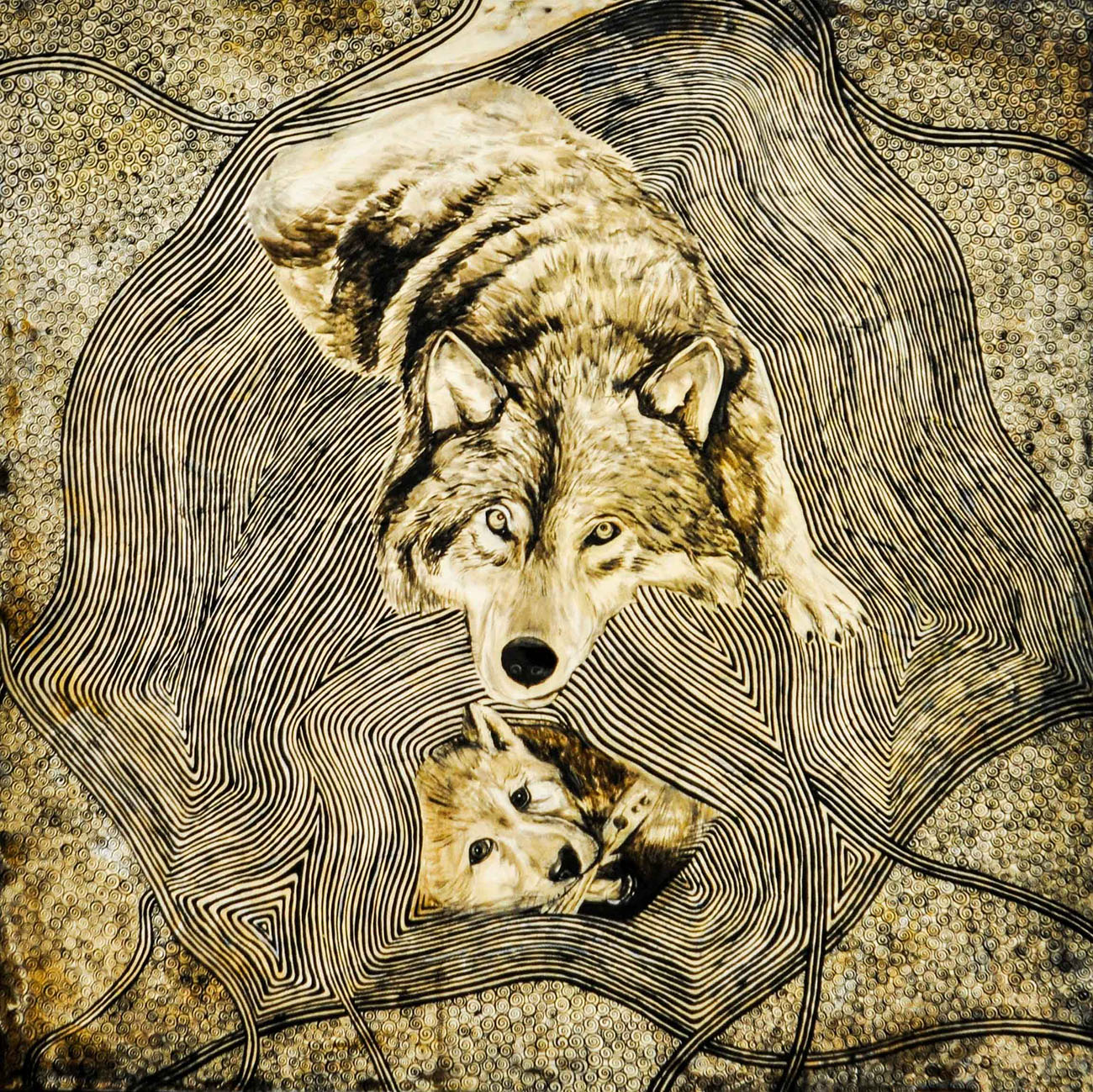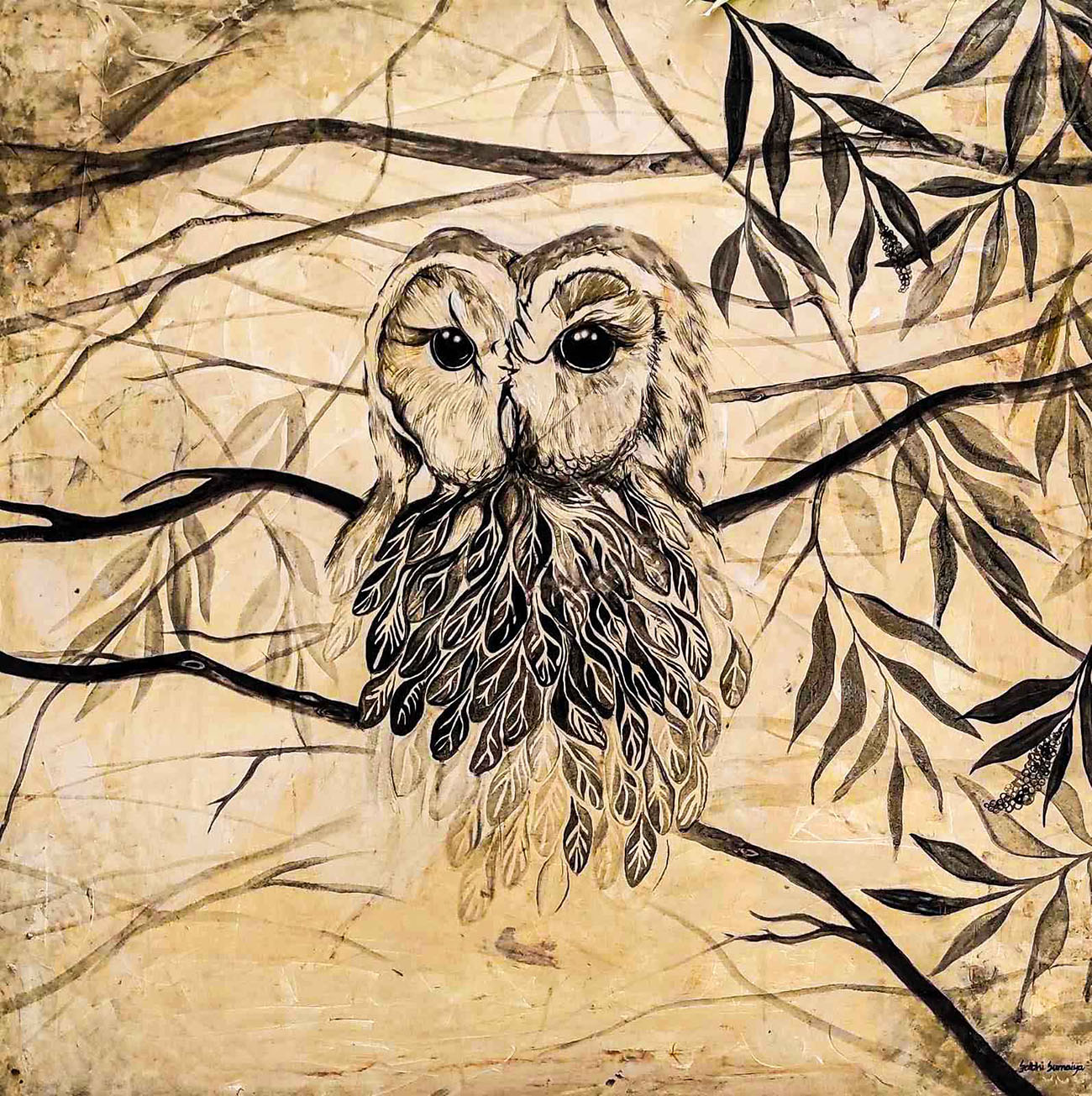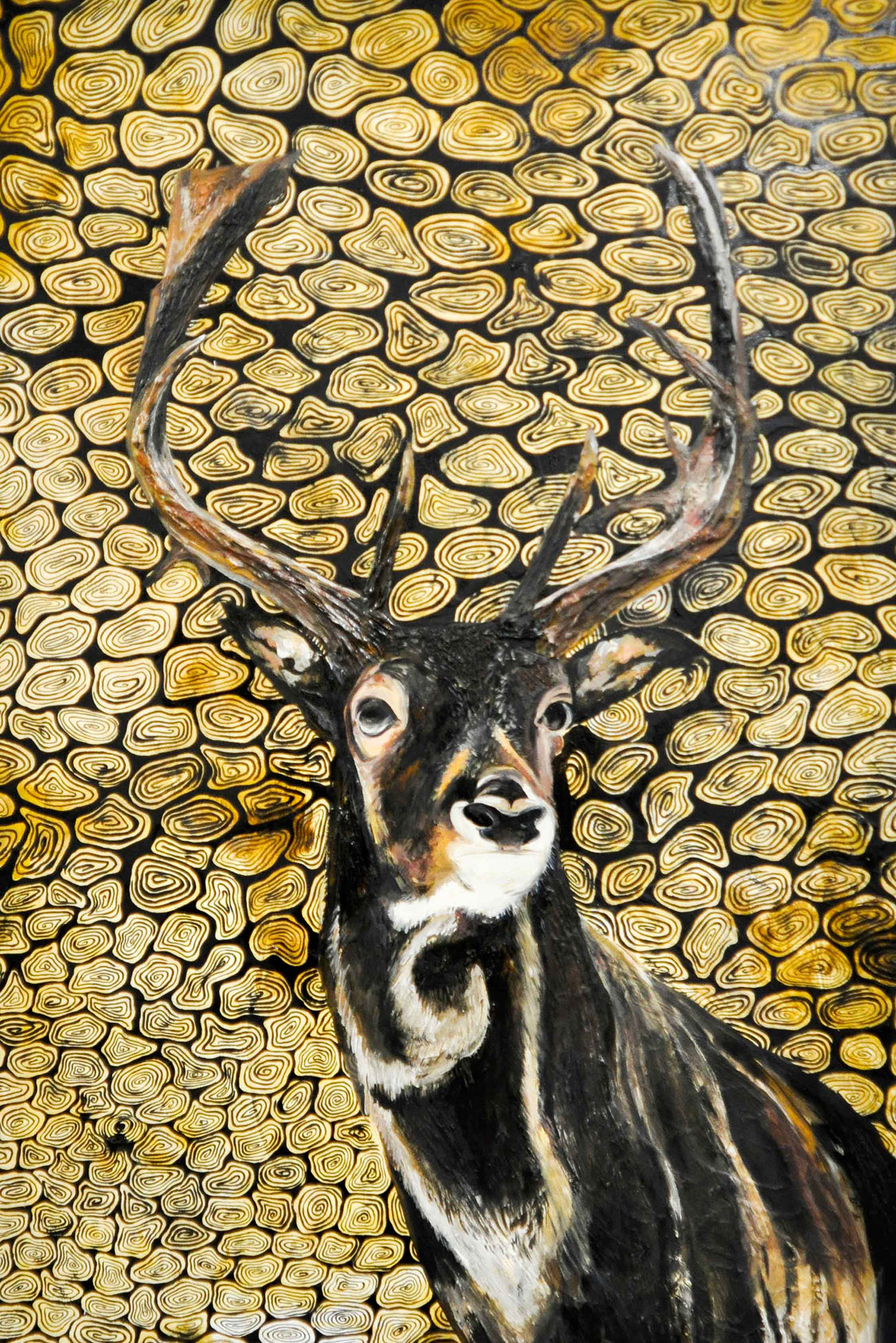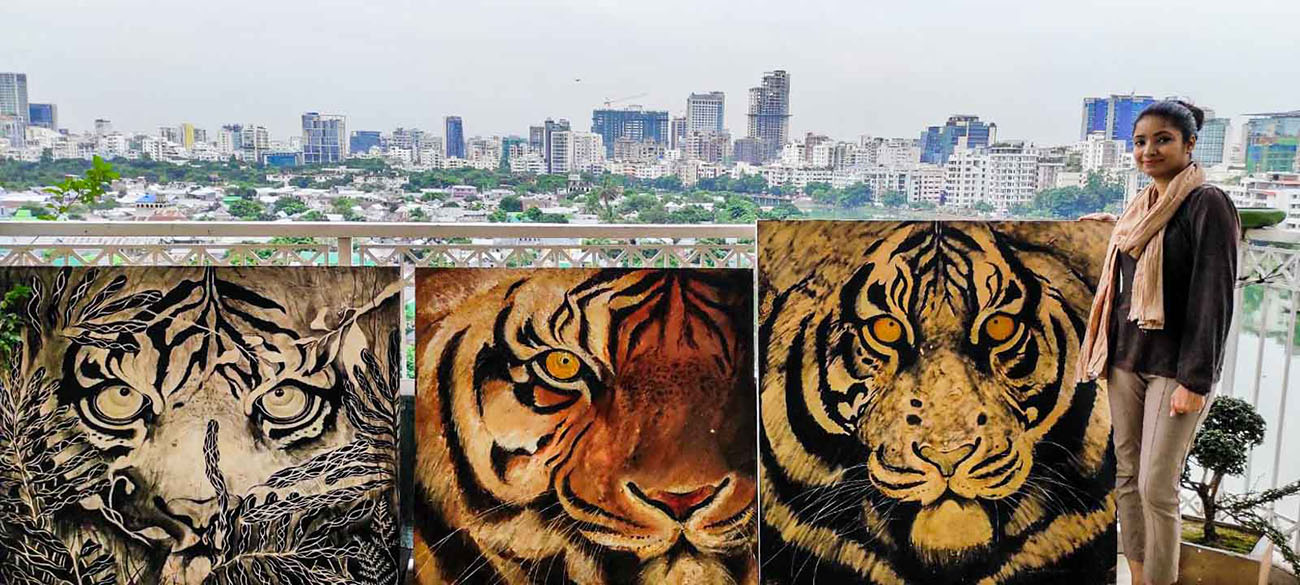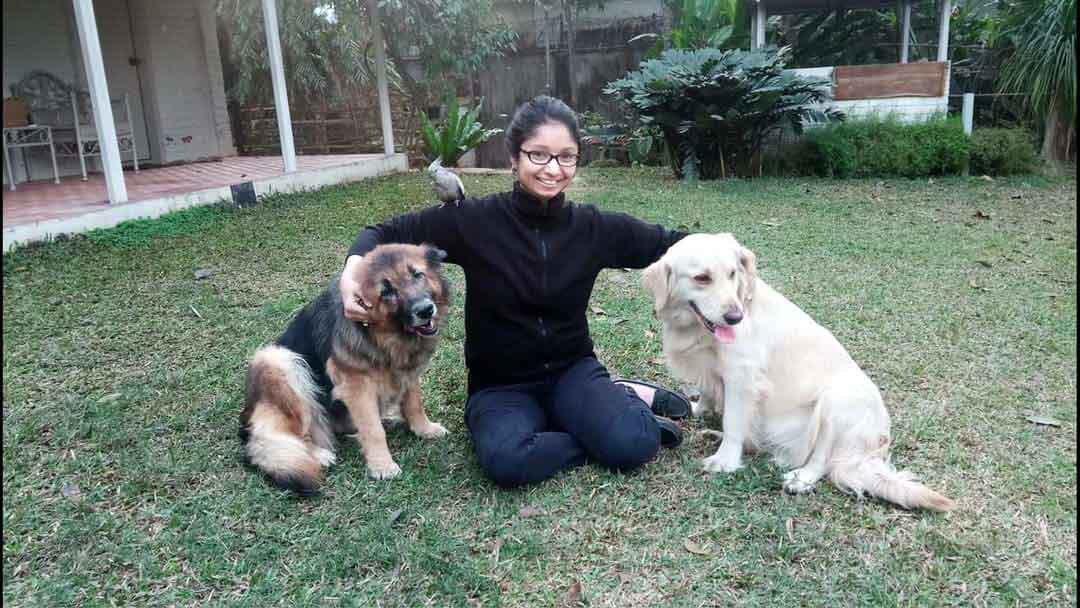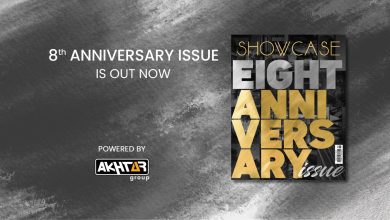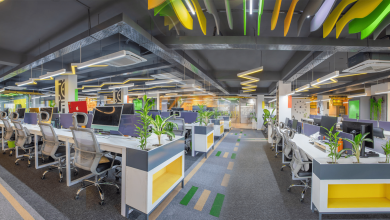Dreaming a Safe Habitat- Salbhi Sumaiya
Native to Bangladesh, Salbhi Sumaiya is a conceptual and visual artist primarily based in Toronto, Canada. While she possesses a palette of skills, her main focus remains Fine Arts. The artist likes to think of herself as an innovative conduit for social and political change, exploring themes based on raising awareness on various contemporary issues faced in today’s world. Some significant themes in her body of work are mass extinction of animals caused by human interference, calamities faced by Myanmar atrocities against the Rohingya population etc. Currently, she is spreading her footprint across the globe through solo or group exhibitions in Canada, South Africa, Poland, Japan, India and Bangladesh and has also managed to bag several awards and credentials. The artist gets candid about her artistic visions.
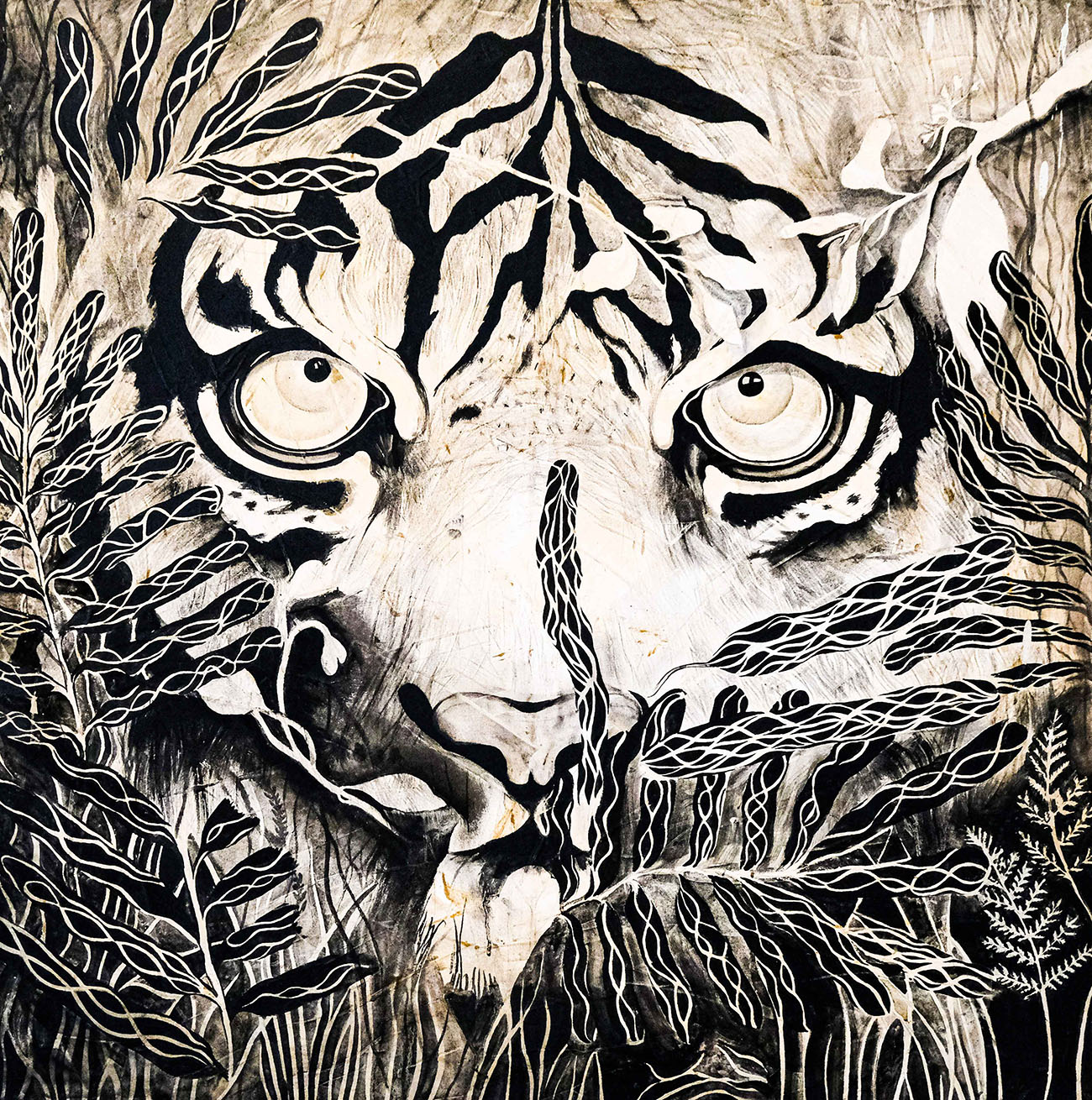
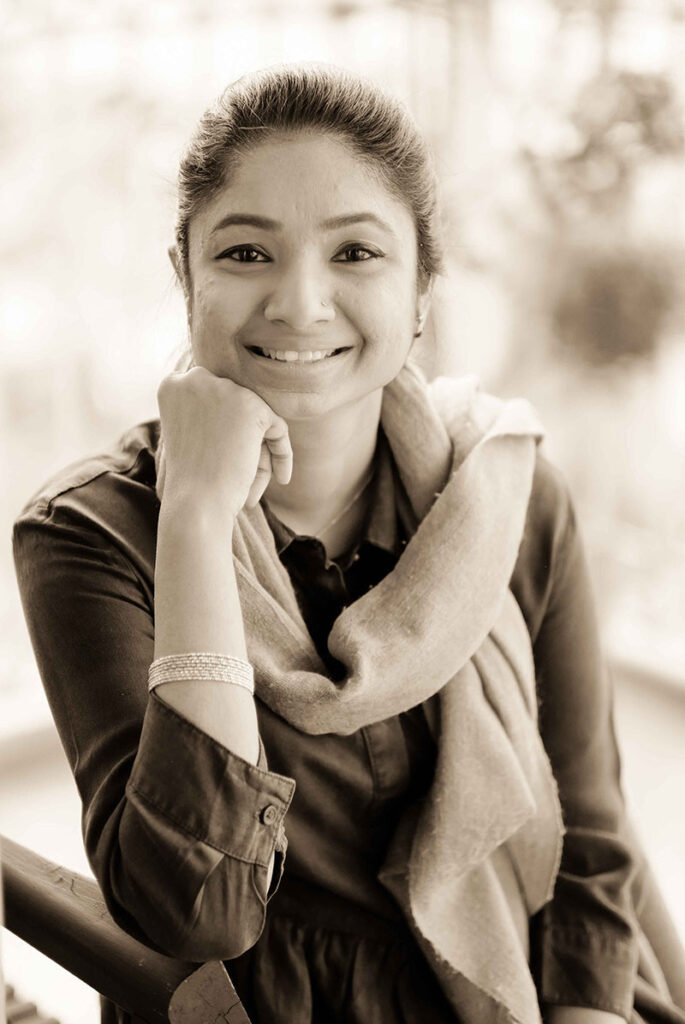
How did you start making art and what initiated you in this field?
At the mere age of less than 5, my parents stumbled upon one of my random drawings on a small blackboard that they’ve bought for me. The subject was an aeroplane. Leaving astonished by the detailing for a child my age and figuring out this could very well be a natural talent, they wasted no time and enrolled me in a renowned art school in Dhaka. From there onwards, I have been painting and here I am still making a living out of it.
I was drawn to it naturally because of its accessibility to me as a visual art form. As a child, the painting was an instinctive way for me to express my ideas and creativity, but as I turned my passion into my profession, the medium became a larger platform for me to convey my thoughts on and raise awareness about environmental and socio-political issues that are important to me.
Can you enlighten us more about the themes you pursue?
The themes in my body of work have been determined by my moral obligation towards the world and all the living beings it contains. Via some of my paintings,
I try to convey how the world has turned from a safe haven for animals, in other words, a sanctuary, to facing the sixth mass extinction due to habitat loss, fragmentation of ecosystems, climate changes, and pollution.
My overall artistic vision is to continue to create art that celebrates the natural world, builds awareness about environmental concerns, animal rights and reminds people of our role as being the most conscious being and the immediate need to take care of the planet. My next project’s focus will be on the threat to wildlife. I have a demonstrated history of partnering with organizations related to social issues. Thanks to such, my work has reached a wider audience as well as received media coverage.
What inspired you to develop your distinctive style of art?
Since as far as I can remember, my cousins and I would get together right before every Eid to put Henna on our hands and I was fascinated by the limitless patterns and designs you can create with Henna. Ever since then, I would incorporate those intricate patterns and designs in my paintings while keeping a style of my own. Also, William Morris, a renowned British artist internationally recognized, has further helped me to develop this specific style of art.
Has your practice changed over time?
While my total practice spans about nearly three decades, with nearing two professional decades, it’s safe to say I have had a few desultory periods. I think I have a hat relatively old, but I haven’t owned or experienced much else that’s lasted this long and frankly, I’m a bit proud of myself for sticking with it, for toting this practice with me through some pretty different lives, in some pretty different places.
What is the most important artist tool for you? Is there something you can’t live without in your studio?
While it’s a very basic tool, fine brushes are the most important tool for me in regard to my practice! I have been using the same old brushes for over 20 years now, there is something about them as they age, just like wine! However, I also believe maybe using brushes is getting a little old, I may also have to incorporate new techniques in my art to keep up with the tide of infinite creativity, while also keeping in mind that classic never goes out of style.
As an artist, do you ever go through an artist block? If so, how do you overcome it?
Any creative person has a time when the ideas seem to run dry and art inspiration becomes sorely lacking. It’s a common dilemma that plagues every artist from time to time. Then again, I believe there is never a lack of subject matter, just the absence of creativity.
For me, an art block usually happens when I’m worn out, either physically or mentally, so when this happens, I try to distance myself from the project, take a break and come back to it with a clear head. Some other things I do to overcome it are as follows; I try to put some fun in the studio as sterility leads to an empty void of nothingness, I always try to inject some colour and life into the studio, so it doesn’t feel like I’m running a clinic. I also look for inspiration in the most unlikely of places; I go and do something else entirely. It’s surprising to find where new ideas are hiding out, they’re often where you would least expect them to be. I explore other creative disciplines by looking beyond other visual artist and illustrators; photography, typography, fashion, film, musician’s for instance. It helps me to broaden my horizons by immersing myself in particular arts or cultures that I typically wouldn’t be interested in could lead to interesting mixed-context inspirations.
Last but not the least, I have my own farmhouse about an hour away from the hustle and bustle of the city where I escape to at every chance I get, to practice yoga and spend quality time with my dogs and other pets. Yoga plays a vital role in my de-stressing regimen as it decreases the secretion of cortisol, which is the primary stress hormone.
At present, in this unprecedented situation, how are you dealing with it and what kinds of works are you occupied with? Are you occupying yourself practicing something new?
I believe in these trying times the best measure to take for you and your loved ones are to stay at home as much as possible. However, this is also a once in a lifetime opportunity to take advantage of all the extra time to finish all your unfinished projects or take up new ones. I’m currently working towards an exhibition in Canada, depicting their wildlife as well as another project related to a series of portraits of Rabindranath Tagore’s 160th birthday celebration next year.
Can you tell us about the current art scene in this pandemic time and what can be done to uphold the art industry?
The life of an artist is not relatively easy as it is, not everyone who deserves the attention generally gets it for a number of reasons. However, the pandemic situation coming to light presents a new kind of opportunity. An opportunity that’s been around for a while now but never fully utilized until now as an artist, at least not to this extent.
For the first time ever, I have had my first virtual art exhibition in Canada, while this was supposed to be the biggest physical art exhibition in Canada (TOAF-Toronto Outdoor Art Fair) attracting about 300000 people every year. I was initially disheartened to know it won’t be taking place physically this year for the first time ever since it’s the inception of 59 years. However; to my surprise, the engagement has been rather well, I could sell a few pieces online. You wouldn’t think that people would spend quite a bit without even looking at it upfront. In fact, I have been approached by galleries and personalities around the world to commission my work, including Japan and UK, which is thousands of miles away from Canada and Bangladesh. This wouldn’t have been the case if the exhibition took its usual course and was held physically. So, I would urge the organizers, promoters and emerging artists from Bangladesh to take up this opportunity to present their work in the virtual world to get them a wider audience reach while also catering to those who wouldn’t usually visit art exhibitions but wouldn’t mind seeing their work online.
Lastly, what are your future plans regarding the field of art?
I aspire to have my own studio/gallery either in Bangladesh or in Canada, where other people can practice their arts as well as showcase them.
However, my main goal is to cater to those with special needs who have a knack for drawing or painting. As known, they have a harder time than most to establish themselves, so if painting is their natural calling and can help make a difference in their lives, I would be more than glad if I can play a part in it.

